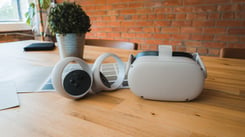Analysts and tech trend predictions all point to VR as the technology that’s going to continue disrupting countless industries. In our series exploring VR use cases, we’ll take a look at the creative ways different industries are adopting VR and the lessons all VR adopters can learn from them. This week, we investigate how retail is using VR to revive the in-store experience.
The shopping experience is a lot more than just entering a store (online or in-person), finding something you want to buy, and buying it; it’s a complex multi-sensory experience for consumers and firms alike. People form first impressions within 50 milliseconds of experiencing it, which makes the brand experience for companies so important to get right the first time.
There are several factors that go into when and how a company and its products enter the market, and how satisfied the consumer is with their end-product. Businesses that have adopted creative virtual reality use cases at all layers of retail have found that it aids with brand cohesion and consumer trust, which ultimately helps them sell more products in less time with improved customer satisfaction.
How L’Oreal Fights Time-to-Market with VR
Corporate beauty giant, L’Oreal, has been using their VR, “Beauty Lab”, as a space for internal teams and mock-consumers to focus on improvements for how they can get products from the prototype stage, to be on retail shelves, faster.
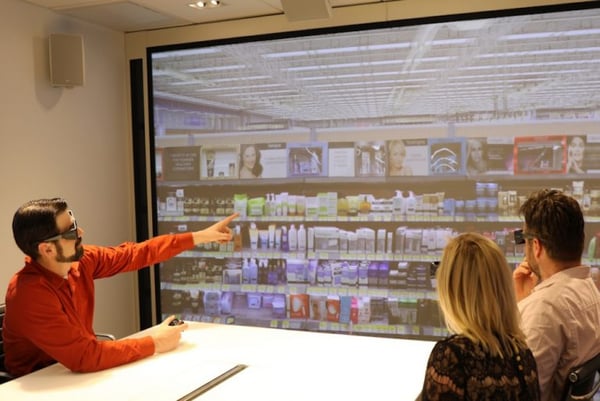
Because L’Oreal has over 30 sub-brands that they need to create cohesion between, they say that the typical time-to-market can take several months. Dermablend, which is one of the 30 sub-brands of L’Oreal, was the first to experiment and reap the benefits of virtual reality; their creation process includes replicating the full shopping experience from the discovery of the product on the shelf all the way to a satisfied purchase. This means that for every product, they have to build a full prototype of their shelf display. Malena Higuera (MH), General Manager at L’Oreal says that “this type of thing takes very complicated, cumbersome and expensive as live merchandise demonstrations, but I really wanted my team to be exposed to as much real, potential feedback as we could get”.
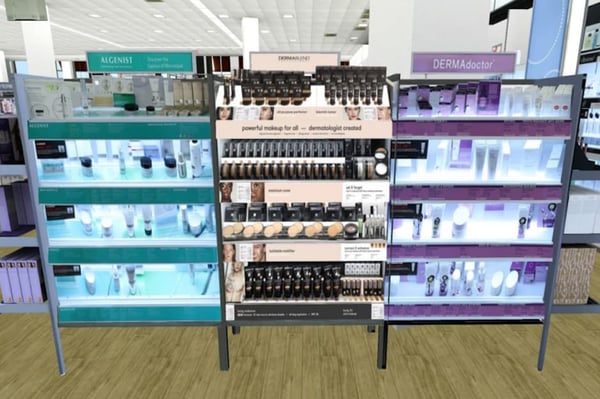
L’Oreal uses virtual reality merchandising displays to better position themselves next to their competitors. Source: psfk.com
With creative VR use cases, they can virtually create their prototypes and envision an in-store experience where mock-consumers can give feedback, and they can reactively make improvements to strengthen their in-store presence and stand-out better against their competition. Some actionable feedback from VR included putting the product’s core focus (dermatological benefits) on display as well as supplying a wider selection of makeup which would better serve consumer needs. With VR, their process, which used to take several months, has been cut down to a matter of weeks, while also saving the company considerable costs and effort towards tweaking their product lines for real consumer feedback once the product was in-stores.
VR Use Cases and the Shopping Experience
When it comes to selling a brand, VR definitely wins the ‘wow’ factor from consumers. Effective marketing and advertising tend to find a way to connect with an audience through an experiential or emotional way. Brands experimenting with VR to achieve these connections are providing both in-store experiences and aligning their brand with forward-thinkers who adopt new technology.
A Trip to Yosemite National Park: The North Face
Take for example, The North Face. They used VR for their customers to experience the atmosphere of Famous Yosemite National Park. This experience allowed willing consumers to wear the product while being in a frosty virtual environment
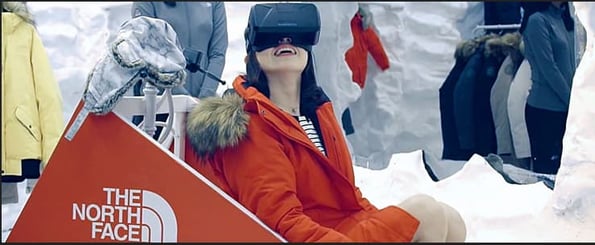
Not only did this experience unite their products with the company’s branding, but the consumer got to connect emotionally to the experience and the product line because of this memorable experience. It’s been proven that people engage with VR content 34% longer than 2D content, and they have a 27% higher emotional connection than through other mediums. Because VR immerses the viewers, they feel a much closer connection towards the content, therefore, the brand. This VR use case is really about engagement and experience.
81% of people who try VR tell their friends about it, which is huge considering there are over 171 million VR users worldwide. VR campaigns draw in a lot of attention from customers, create compelling brand experiences, and create more buzz and influence than any other type of ad media available. Plus, 53% of people would prefer to buy from a company that uses VR over ones that don’t, which makes the concept of using VR for marketing campaigns extremely attractive.
‘Try-On’ Products with AR
Augmented reality product change rooms are a developing trend in retail and are pushing the boundaries of retail virtual reality use cases. According to a study done by Walker Sands, 66% say they are interested in shopping using virtual reality, and 35% of consumers would shop more online if the virtual interaction with the product is made. AR is the solution that fills the gap between buying the idea of something online, to the physical satisfaction of the consumer when they receive it in the mail.
Trying-on Apple
Take a look at Apple’s app, which let people try on their own customizable apple watch. Unfortunately, the app is no longer available, but its purpose was to let the consumer see the product on themselves. The app would let you device from all angles switch between different wristbands, sizes, and colours - and the best part was that they got to see it on their own wrist, which eliminated the grey area of what people should expect when they do purchase and receive the product. With AR, true size and scale is shown, which was usually an issue observed with online shopping -
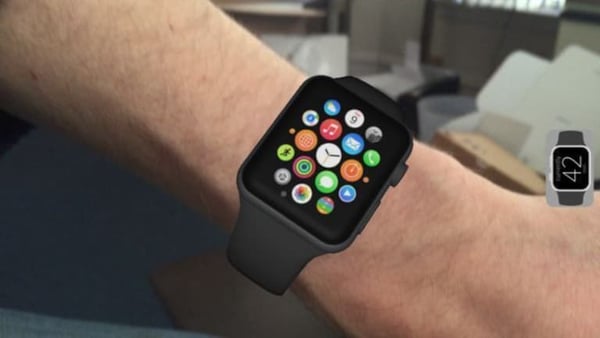
Now, just because Apple’s app is no longer available, the idea of a virtual store and the ability to virtually ‘try-on’ products is still very much alive.
Sephora Virtual Artist
The app, which was developed alongside an AR company called ModiFace, scans your face to identify your facial features and uses this to allow you to try on some of Sephora’s products in the comfort of your own home.
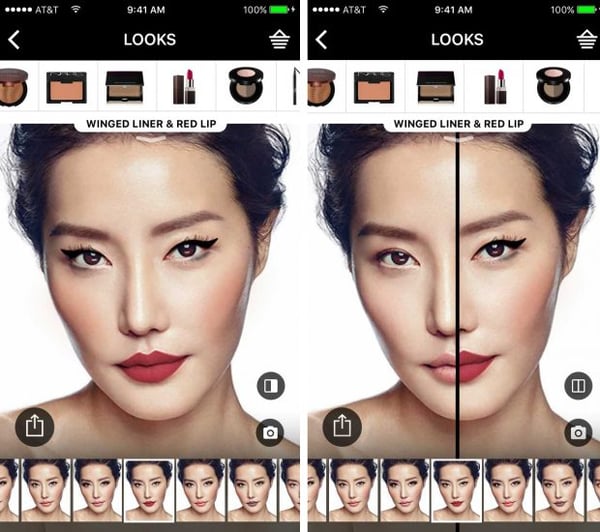
At the moment, there are options that let you try-on lip colours, eyeshadows, fake eyelashes, and “virtual tutorials”, which overlay the products on your face to show you how to apply the products properly, and how to create certain looks; but we can imagine as AR advances, and the makeup pigments are more realistic, we can see them adding most of their product lines to the app.
VR and AR are disrupting retail and the lessons - from revising a go-to-market strategy to in-store experiences and an evolution of online shopping will be applied in other industries, from automotive to interior design in the coming 18-months.
Ride the rising tech wave with us and get started with Yulio VR today! Check out our free accounts at Yulio, and join us for a free training webinar, hosted every other Thursday at 1 pm EST by our Client Success Manager, Dana Warren, for tips, tricks, advice, and walkthroughs of our software, plugins and creating and enhancing your VR projects!



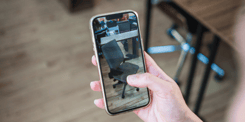
.jpg?width=245&height=150&name=active-adult-beautiful-1799244%20(1).jpg)
